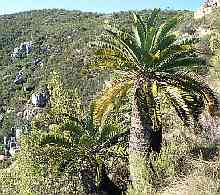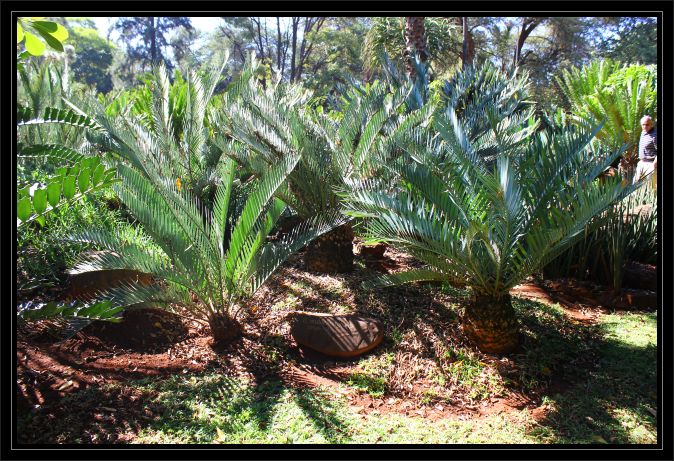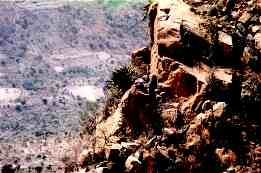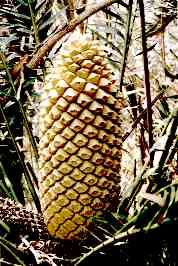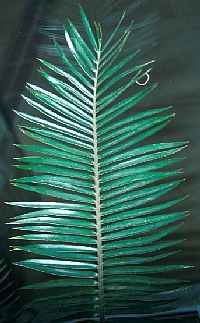Etymology:
Honoring German botanist J.G.C. Lehmann.
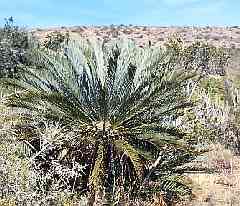
Description:
Plants arborescent; stem 2 m tall, 25-45 cm diam.
Leaves 100-150 cm long, blue or silver, dull, strongly keeled (opposing leaflets inserted at 50-90° on rachis); rachis blue, straight with last third sharply recurved, strongly spirally twisted in most leaves; petiole straight, with no prickles; leaf-base collar prominent; basal leaflets not reducing to spines.
Leaflets lanceolate, weakly discolorous, not overlapping, not lobed, insertion angle obtuse (45-80°) or acute (less than 45°); margins flat; upper margin entire (no teeth); lower margin entire (no teeth); median leaflets 12-18 cm long, 15-20 mm wide.
Pollen cones 1, narrowly ovoid or fusiform, green or brown, 25-35 cm long, 8-10 cm diam.
Seed cones 1, ovoid, green or brown, 45-50 cm long, 25 cm diam.
Seeds ovoid or oblong, 30-45 mm long, 25-30 mm wide, sarcotesta red.
Distinguishing features:
The entire, well-spaced leaflets distinguish this species from other blue leaved species of the eastern Cape Province, as do the green cones with persistent dark brownish tomentum and a more or less smooth terminal sporophyll facets. The blue-leaved species of the Cape Province have discolorous leaves with stomata on the undersurfaces only, in contrast to the blue-leaved species of Transvaal, which all have stomata on both surfaces of the leaflets.
Distribution and habitat:
Eastern Cape Province, South Africa, in arid low succulent shrubland on rocky ridges and slopes. E. lehmannii occurs mainly on sandstones, in contrast to the very similar E. princeps, occurring on dolerite formations.
Conservation:
1997 IUCN Red List of Threatened Plants category R.
Reference: The Cycad Pages



